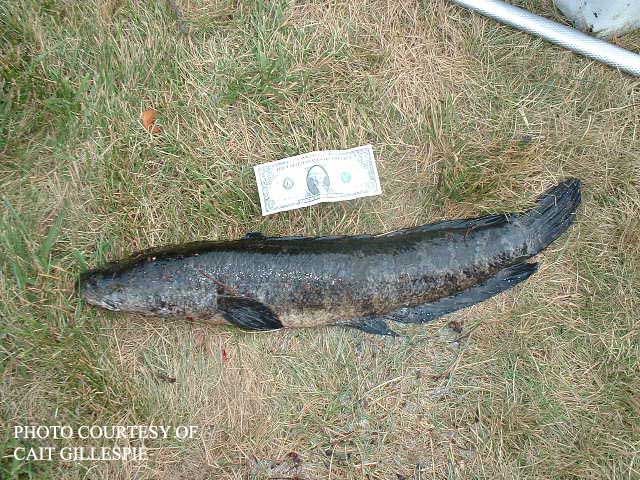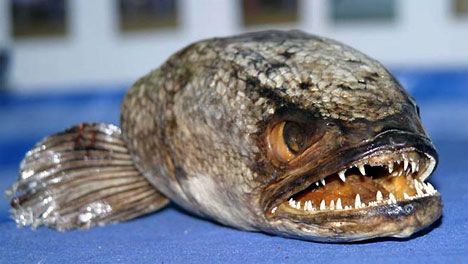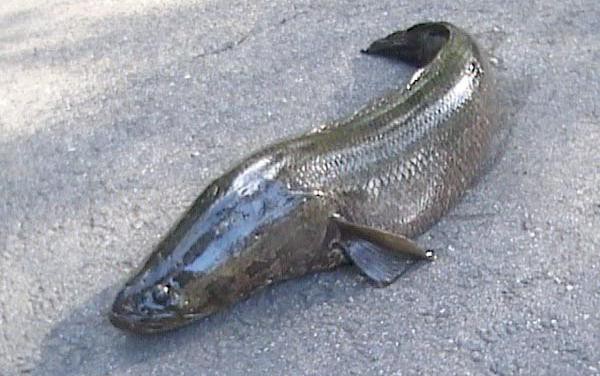
Channa orientalis
FAMILY
Channidae
TAXONOMY
Channa orientalis Bloch and Schneider, 1801, India “orientali”
(presumably Sri Lanka).
OTHER COMMON NAMES
English: Smooth-breasted snakehead; Sinhalese: Kola kanaya.
PHYSICAL CHARACTERISTICS
Maximum length 3.9 in (10 cm); one of the smallest snakeheads.
Pelvic fins absent; body scales relatively large (LL=
39–43), and a single large scale is on each side of the underside
of lower jaw. Body often has bluish cast with 8–11 black
descending bands on a grayish to dark brown dorsal background
blending into a whitish ventral, with an orange to
red outer margin on the dorsal, anal and caudal fins, a black
spot at the base with 3–8 concentric black bands on the pectoral
fins. Single orange or yellow-rimmed black ocellus at
the back end of the dorsal fin in young usually fades away by
maturity.
DISTRIBUTION
Endemic to tropical rainforest environment of southern Sri
Lanka.
HABITAT
Small, shallow rivulets barely deeper than its body, and also in
mountain streams, small ponds, and ditches.
BEHAVIOR
Known to effectively transverse land.
FEEDING ECOLOGY AND DIET
Feeds mostly on terrestrial and aquatic insects, caddisflies, and
small fish.
REPRODUCTIVE BIOLOGY
Mouth brooders. Around 40 eggs are deposited in the floating
nest, then 9–10 days after fertilization the male takes the eggs
into his mouth for hatching. After hatching, either parent may
hold the brood, which exits and enters through the gills, not
the mouth. Fry feed on eggs laid later by their mother.
CONSERVATION STATUS
Not threatened, but a decline in the number of unpolluted
streams and shrinking rainforests in Sri Lanka will probably affect
future populations in the future.
SIGNIFICANCE TO HUMANS
A small number have been exported for the aquarium fish
trade.
Photo Gallery of - Walking snakehead





 Animalia Life
Animalia Life